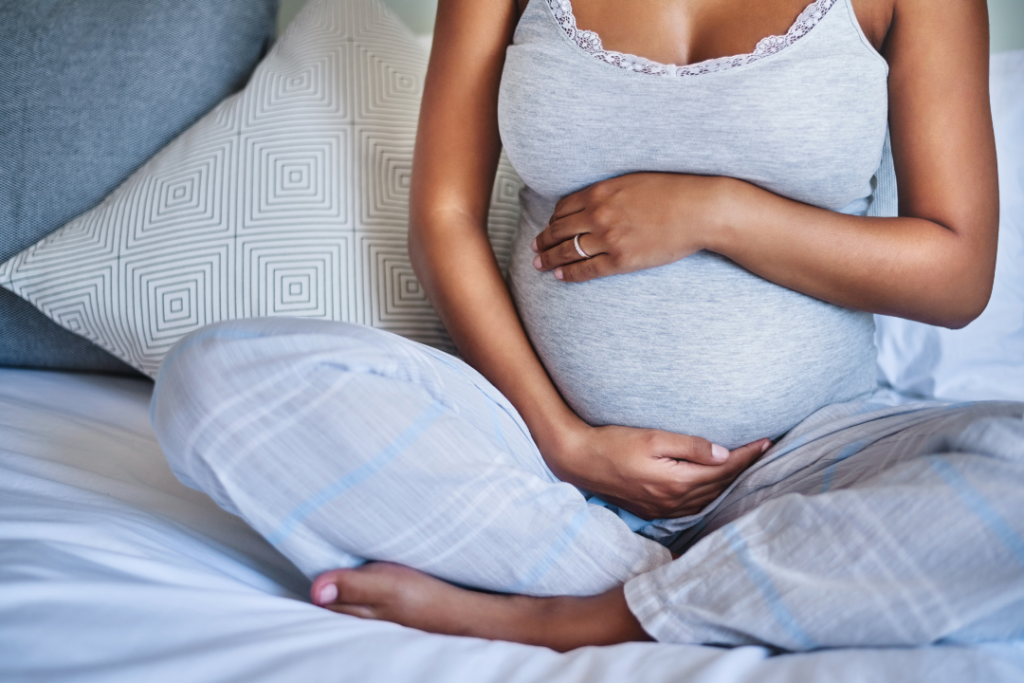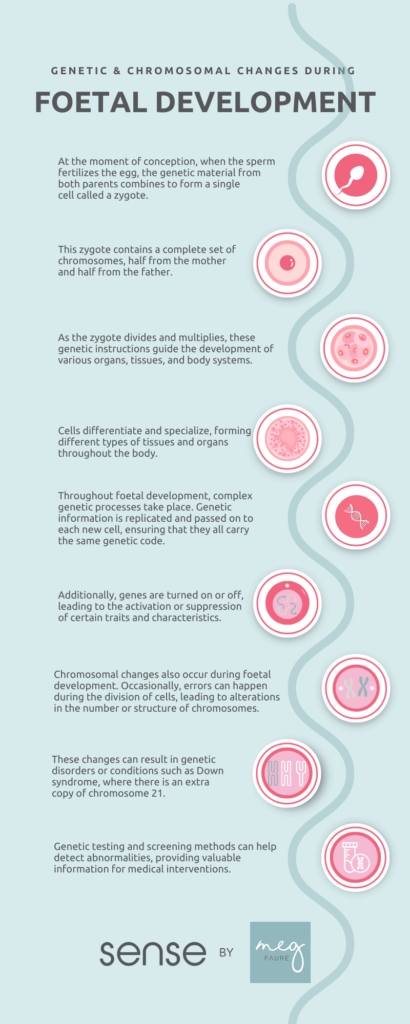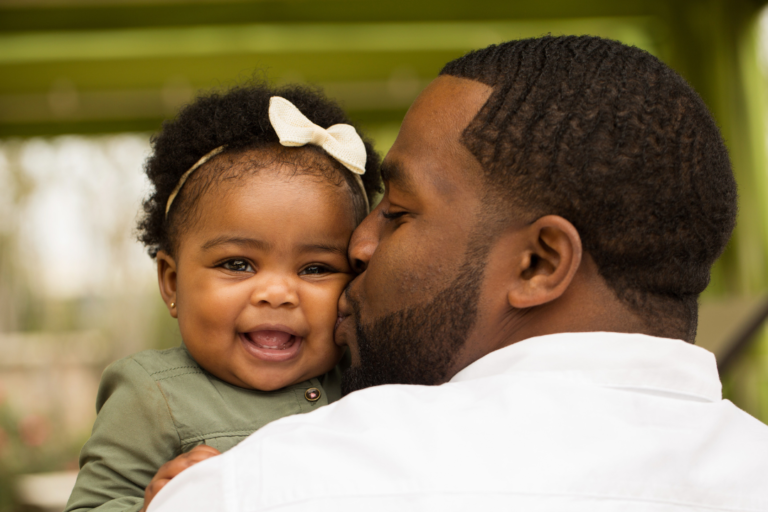A comprehensive guide to understanding foetal development in the womb is an article you will come back to throughout your pregnancy. As you reach new stages in your pregnancy, you’ll want to know how your baby is developing and what changes are taking place in your body. As an Occupational Therapist and mother of 3, the miracle of life still takes my breath away. Save this article to go back to as you move through each trimester of your pregnancy or download my app for a weekly update on your body and baby’s development. Download Parent Sense now and take the guesswork out of pregnancy and parenting.
Week-by-week breakdown: Key milestones in foetal development
Foetal development is an intricate and fascinating process that spans approximately 40 weeks from conception to birth. Here is a brief week-by-week breakdown of the key milestones in foetal development:
Weeks 1-4: After fertilization, the fertilized egg implants itself into the uterus. The cells begin to divide rapidly, forming the foundation of the developing embryo.
Weeks 5-8: The embryo’s major organs and systems begin to take shape. The heart starts beating and begins pumping blood, while the circulatory system takes shape. The brain and spinal cord develop from the neural tube, and the basic structure of the digestive system, including the stomach and intestines, starts to form. Tiny limb buds appear, which will eventually develop into arms and legs. Facial features, including eyes, ears, and a mouth, start to form.
Weeks 9-12: The embryo is now considered a foetus. The organs continue to develop and become more complex. The respiratory system begins to develop, with the formation of the lungs and airways. The liver starts producing blood cells, and the kidneys begin to function. Fingers and toes become more defined, and the foetus starts to make small, spontaneous movements. External genitalia also start to differentiate.
Weeks 13-16: The foetus grows rapidly during this period. Muscles and bones become stronger, and the skeleton starts to ossify. The foetus starts to swallow and produce urine. Gender can typically be determined through ultrasound imaging.
Weeks 17-20: The foetus’s skin becomes covered with a fine layer of hair called lanugo. Eyebrows and eyelashes begin to form. The development of the senses progresses, with the formation of taste buds and the ability to hear sounds from the outside world. The foetus begins to exhibit coordinated movements.
Weeks 21-24: Rapid brain development occurs. Lung development begins as well, although the foetus would still require medical assistance if born prematurely. The foetus also gains some control over its own body temperature.
Weeks 25-28: The foetus’s eyes can open and close, and it can respond to light. The respiratory system continues to mature, and the foetus starts to practice breathing movements. Survival outside the womb becomes possible with intensive medical care.
Weeks 29-32: The foetus’s bones are fully developed, but they are still soft and pliable. It continues to gain weight rapidly, and its skin becomes less transparent.
Weeks 33-36: The foetus continues to grow and position itself for birth. The organs are almost fully developed, and fat accumulates under the skin, providing insulation and energy reserves.
Weeks 37-40: The foetus is considered full-term and ready for birth. It has reached its final size and weight. During this time, the foetus may descend into the pelvis, preparing for delivery.
Factors influencing foetal growth and development
Foetal growth and development are influenced by a variety of factors throughout pregnancy. These factors can impact the overall health and well-being of the developing foetus. Here are some key factors that influence foetal growth and development:
Genetic Factors
The genetic makeup of the foetus plays a significant role in determining its growth and development. Inherited traits and genetic disorders can impact various aspects of foetal development, including organ formation, physical characteristics, and susceptibility to certain diseases.
Maternal Health
The mother’s overall health and well-being during pregnancy have a direct impact on foetal growth and development. Factors such as maternal nutrition, pre-existing medical conditions, and lifestyle choices (such as smoking, alcohol consumption, and drug use) can affect the foetus. Maternal illnesses, infections, and exposure to certain medications or toxins can also have detrimental effects.
Maternal Nutrition
Adequate maternal nutrition is crucial for optimal foetal growth and development. The mother’s diet should provide essential nutrients, including proteins, carbohydrates, fats, vitamins, and minerals. Insufficient or excessive nutrient intake can lead to complications and affect the foetus’s growth and organ development.
Placental Function
The placenta plays a vital role in supplying oxygen, nutrients, and hormones to the developing foetus. Any issues with placental function, such as placental insufficiency or abnormalities, can restrict the supply of essential resources to the foetus, leading to growth restriction and developmental problems.
Maternal Medical Conditions
Pre-existing maternal medical conditions, such as diabetes, hypertension, thyroid disorders, and autoimmune diseases, can affect foetal growth and development. These conditions may impact the supply of nutrients and oxygen to the foetus or increase the risk of complications during pregnancy.
Environmental Factors
Environmental factors, both inside and outside the womb, can influence foetal growth and development. Exposure to pollutants, chemicals, radiation, and certain medications or drugs can have adverse effects on the developing foetus. Additionally, maternal stress levels and socioeconomic factors can indirectly impact foetal growth and development.
Gestational Age
The stage of pregnancy, or gestational age, also plays a role in foetal growth and development. Different organs and systems have specific windows of development, and any disruptions during these critical periods can have long-lasting effects.
Remember that each pregnancy is unique, and the interplay of these factors can vary from one individual to another. Regular prenatal care, including proper medical monitoring, nutrition, and lifestyle choices, can help optimize foetal growth and development and minimize potential risks.
The role of nutrition and prenatal care in foetal development
Nutrition and prenatal care play crucial roles in supporting optimal foetal development throughout pregnancy. Adequate nutrition and proper healthcare during this period provide essential nutrients, promote healthy growth, and reduce the risk of complications. Here is a summary of the importance of nutrition and prenatal care in foetal development:
Maternal Nutrition
Proper maternal nutrition is vital for foetal development. The mother’s diet should include a balanced intake of macronutrients (proteins, carbohydrates, and fats) and micronutrients (vitamins and minerals). These nutrients support the growth of the developing foetus, contribute to organ formation, and help establish a strong foundation for long-term health. Insufficient intake of key nutrients can lead to growth restriction, developmental delays, and an increased risk of birth defects.
Folic Acid
Adequate folic acid intake is crucial in the early stages of pregnancy. It helps prevent neural tube defects in the developing foetus, such as spina bifida. Women of childbearing age are often advised to take folic acid supplements even before conception, as these defects occur early in pregnancy when many women may not be aware they are pregnant.
Weight Gain
Appropriate weight gain during pregnancy is important for both the mother and the foetus. Underweight women may be at risk of delivering a low birth weight baby, while excessive weight gain can lead to complications such as gestational diabetes and preeclampsia. Healthcare providers can guide women on the recommended weight gain based on their pre-pregnancy BMI (Body Mass Index).
Prenatal Supplements
Prenatal vitamin and mineral supplements, prescribed by healthcare professionals, are commonly recommended to ensure sufficient nutrient intake during pregnancy. These supplements often contain additional iron, calcium, and other nutrients essential for foetal development and maternal health.
Hydration
Staying hydrated is essential for maintaining proper blood volume, supporting the placenta’s function, and promoting healthy foetal development. Pregnant women should aim to drink an adequate amount of water daily and avoid excessive caffeine intake.
Regular Prenatal Check-ups
Regular prenatal care visits are crucial for monitoring the health and development of both the mother and the foetus. These visits include physical examinations, ultrasounds, and various tests to assess the progress of the pregnancy and identify any potential complications early on. Healthcare providers can offer guidance on nutrition, monitor the foetus’s growth, and address any concerns or issues that may arise.
Lifestyle Factors
As mentioned above, a healthy lifestyle during pregnancy is beneficial for foetal development. This includes avoiding harmful substances and getting regular physical activity, as advised by healthcare providers.
Your pregnancy is a great time to prioritise your health and proper nutrition, if you haven’t previously. Be sure to get comprehensive prenatal care, too so you can do everything you can to contribute to the healthy growth and development of your unborn baby. Regular healthcare monitoring, coupled with a nutritious diet, supports the formation of vital organs, reduces the risk of birth defects, and sets the stage for a healthy start to life.
Foetal senses: How the baby experiences the world inside the womb
If you are familiar with my work, you will know that I specialise in infant sensory integration and development. I talk about a baby’s sensory world across all of my books, podcasts, articles and talks. In particular, I advise parents to recreate the sensory experience of the womb to better cope with the first few months of your baby’s life. Understaning your baby’s sensory world in utero is key to implementing this technique.
During pregnancy, the developing foetus experiences the world in its own unique way through its senses. While the womb is a protected and enclosed environment, the foetus gradually develops the ability to perceive and respond to various stimuli. Here is a summary of how the foetus experiences the world inside the womb, including when babies start to hear sounds:
Touch
From early on in development, the foetus can sense touch. It begins to explore its surroundings by touching the uterine walls, umbilical cord, and even its own body parts. By around 8-10 weeks, the foetus develops sensitive areas on its face, palms, and soles of the feet, which are responsive to touch. The deep pressure of the womb is comforting and familiar and the reason why I suggest the practice of swaddling once your baby is born.
Taste and Smell
By the second trimester, the foetus starts to swallow and can detect flavors from the amniotic fluid, which can be influenced by the mother’s diet. This early exposure to different tastes contributes to the development of the baby’s taste preferences. While the foetus is exposed to smells in the womb, the extent of its olfactory capabilities is still not fully understood.
Sight
Although the foetus’s eyes begin to develop early in pregnancy, the womb environment is dark, and the foetus’s visual capabilities are limited. However, by the third trimester, the foetus’s eyes open, and it can perceive changes in light intensity and distinguish between light and dark.
When do babies start to hear sounds in the womb?
Research suggests that by the end of the second trimester, typically around 24-26 weeks of pregnancy, babies start to hear sounds in the womb. At this stage, the foetal auditory system has developed enough for the baby to detect external sounds, including the mother’s voice and other environmental noises.
The mother’s voice holds a special significance for the developing foetus. Studies have shown that unborn babies can recognize and respond to their mother’s voice by the third trimester. The rhythmic patterns and intonations of the mother’s voice may have a calming and soothing effect on the foetus.
On the other hand, loud or sudden noises can startle the baby in the womb, leading to increased foetal movements or changes in heart rate. Consequently, pregnant women are often advised to avoid exposure to excessively loud or jarring sounds to prevent unnecessary stress or discomfort for the foetus.
Overall, the foetal senses gradually develop and provide the foetus with a unique perception of the world inside the womb. While the experience is limited compared to life outside the womb, the foetus begins to establish connections with its environment, laying the groundwork for future sensory experiences after birth.
The fascinating journey of foetal movement and kicks
Pregnancy can be tough, especially if you suffer with excessive or extended nausea or other health conditions. Almost everyone experiences some physical discomfort or if you’re very lucky, you may only have some interrupted sleep at some point. But one of the most incredible parts of pregnancy is feeling your baby kick and move. It is truly a remarkable and captivating phenomenon unlike anything else.
Here is a summary of the fascinating journey of foetal movement and kicks:
Early Movements
Foetal movements can be detected as early as the 7th or 8th week of pregnancy, although they are not typically felt by the mother until later on. During this stage, the movements are mostly reflexive and involuntary, driven by the developing nervous system.
Fluttering Sensations
As the pregnancy progresses, usually between 18 and 25 weeks, the mother starts to feel the first movements of the foetus. These initial sensations are often described as flutters or gentle movements, similar to the fluttering of butterfly wings. They may be sporadic and subtle at first, making it easy to miss or mistake for other sensations.
Increasing Strength and Frequency
Over time, the foetal movements become more pronounced and frequent. The mother begins to experience a range of sensations, including kicks, jabs, rolls, and stretches. As the foetus grows larger and stronger, its movements can sometimes be seen from the outside as the abdomen visibly protrudes or shifts.
Patterns and Routines
As the pregnancy progresses further, usually by the third trimester, the foetus starts to establish patterns and routines of movement. This can include periods of increased activity and moments of relative stillness. Mothers may notice that certain activities or stimuli, such as eating or playing music, elicit a response and stimulate the foetus to move.
Response to External Stimuli
The foetus can respond to external stimuli, such as sounds, light, and touch, by exhibiting movements. For instance, the foetus may kick or shift in response to a loud noise or when the mother gently presses on her abdomen. This interplay between the external world and the foetus’s movements provides a glimpse of the emerging sensory capabilities of the developing baby.
Decreased Movements
Towards the end of pregnancy, as the space inside the womb becomes more limited, the mother may notice a change in the pattern and intensity of foetal movements. Movements may feel more deliberate and focused, and there may be fewer overall kicks and more stretches or shifts. It is important for expectant mothers to be aware of their baby’s movements and promptly report any significant changes to their healthcare provider.
The journey of foetal movement and kicks is a testament to the incredible growth and development occurring within the womb. It is a tangible and awe-inspiring way for expectant mothers to connect with their unborn babies and witness their progress. Monitoring and appreciating these movements contribute to the bonding experience and the joy of anticipating the arrival of a new life.
Genetic and chromosomal changes during foetal development
You may have heard the debate of nature versus nurture relating to whether environment or biology have a greater impact on a child’s development. The fact is that during foetal development, intricate genetic and chromosomal changes occur that shape the blueprint of an individual’s characteristics. Genes, which are segments of DNA, carry the instructions for building and functioning of the body. Chromosomes, found in the nucleus of cells, are structures that house these genes. Let’s take a look at the entire process:
Understanding the intricate genetic and chromosomal changes during foetal development is crucial for identifying potential genetic disorders or conditions early on. Genetic testing and screening methods can help detect abnormalities, providing valuable information for medical interventions or counselling to support the health and well-being of both the foetus and the family.
Preparing for birth and beyond
I hope you’ve enjoyed reading this comprehensive guide to understanding foetal development in the womb and that you’ve taken away valuable information that can support your choices in pregnancy. You and your baby are truly a force of nature. Take care of yourselves and enjoy the moments!
If you want more support preparing for the arrival of your baby, join Parent Sense’s Birth Sense online course. Presented by leading antenatal expert, Sr Tina Otte, the course covers everything you need to know for your baby’s birth.





